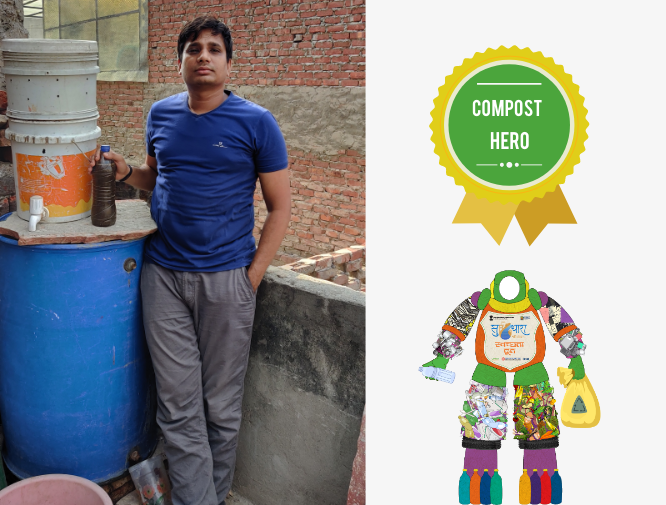
During our household survey for the PSA Office’s Su-Dhara Project to address the challenges of waste management in East Delhi and raise awareness among the community, we met Mr. Pradeep Panchal, a real compost hero!
A resident of Babarpur area, Mr. Pradeep hails form a rural village in India and after settling down in the urban, he started his own composting process on his terrace and has been successfully doing it for over 3 years now.
Even during such difficult times of COVID-19 he continues to run his little compost factory on his rooftop without any hindrance! He became our Su- Dhara Doot by sharing his composting story that can really help you start doing composting at your home now! We at the Su-Dhara team interviewed him about his interest in composting, how he has been doing it single-handedly and what obstacle he faces in the process.
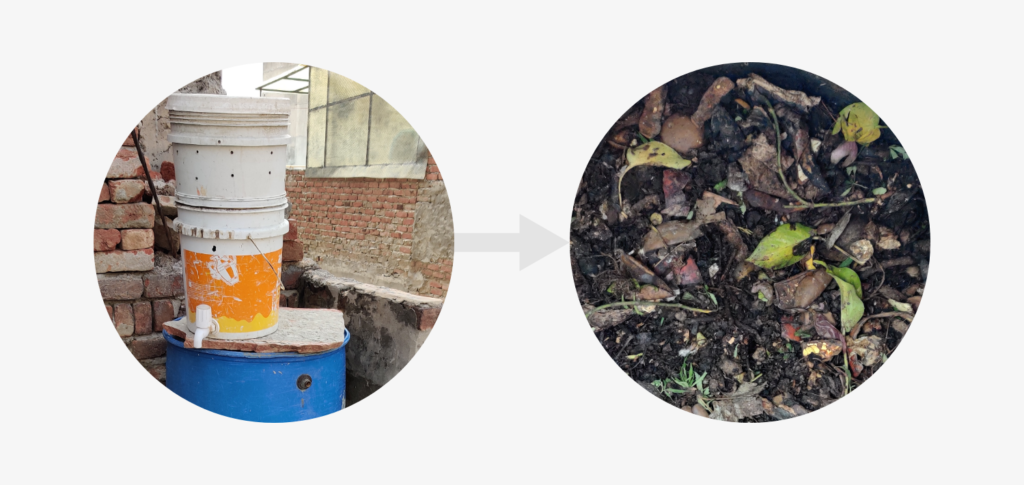
Mr. Pradeep lives with 3 other members in his house and according to him, his kitchen generates nearly 200-500 gm of compostable waste daily. These are mainly fruits and vegetable peels. To begin the composting process, Mr. Pradeep segregates all his kitchen waste, which has become a regular habit now. He stores all the compostable waste in a polythene bag till it is enough for a full batch of compost and this usually takes 3-4 days.
“The release of a liquid substance from the tap is the first sign of the onset of the decomposition process.”
The composting set up that Mr. Pradeep has on his rooftop is self-made; approximately 20L in volume and has a tap at the bottom to help release the leachate. He keeps a separate larger container, nearly 250L in volume for larger piles of waste, an ideal way to fasten the composting process. This larger container allows for better aeration and also maintains higher temperatures in comparison to the smaller one. One important thing is that you have to regularly stir the contents of the composting unit to ensure even decomposition of materials. Regular mixing also removes extra moisture.
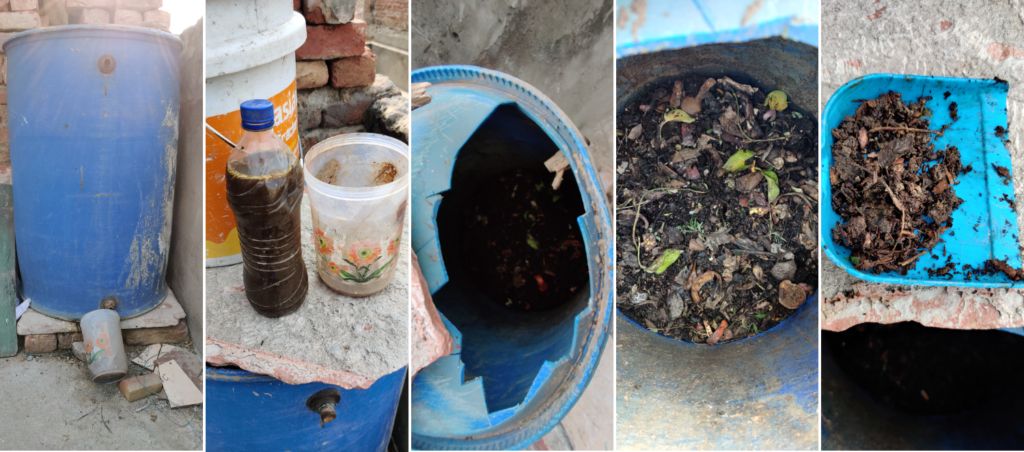
“Temperature and moisture plays a key role in the composting process.More the moisture in the container, slower is your composting process and higher the temperature, faster the process.”
Segregating kitchen waste is the first essential step to begin composting. Now-a-days people do not want to dedicate even 5 minutes to segregating their waste. If one segregated, they could very easily be composting. I have barely seen anyone in this area who composts their kitchen waste. Very few people these days understand the benefits of composting, but the ones who do are every self motivated and do it without any external stimuli. If one can keep two separate bins and make it a habit to segregate everyday waste, it hardly takes much time. After all, what’s most important is the willingness to start!
Compostable waste includes vegetables and fruit waste, unconsumed cooked food, tea leaves, egg shells, etc. In earlier times these were usually fed to cows and other animals but in our current urban scenario, people barely have time and they throw it into their waste bins.
“Composting biodegradable waste could be a very effective way of tackling our mounting waste problems.”
Materials like cardboard wood chips, saw dust are also compostable as they have a high carbon content. So every time you order yourself a box of pizza, you receive free raw materials for your compost! Cocopeat can also be added to improve the quality of your compost. “If you notice that your composting process is not generating enough heat you can add neem powder (neem ki khali)”, mentions Mr. Pradeep. He also adds some earthworms to improve the compost quality.
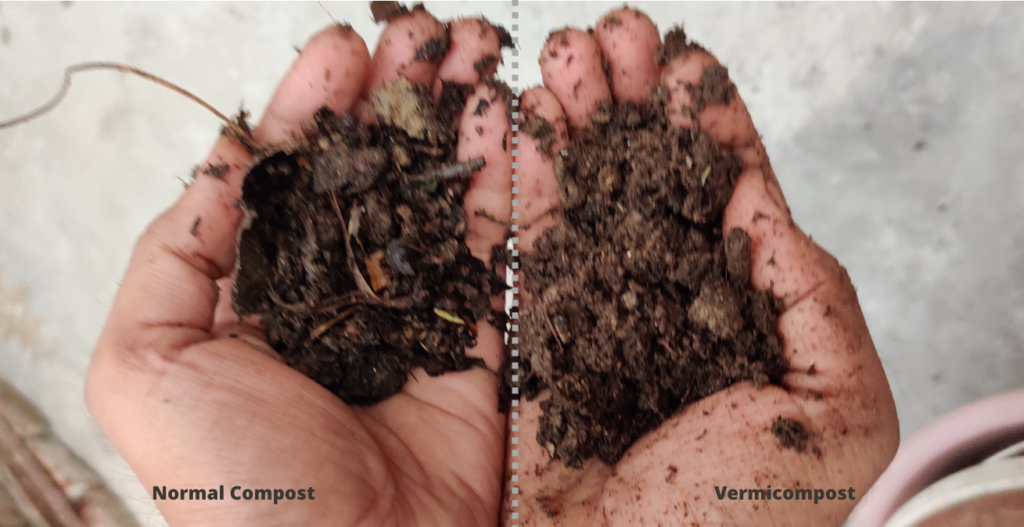
One can start composting with a 20L drum with a tap at the bottom. There are numerous channels online that explain you the step by step process of composting. Once decomposition starts in the drum, you can add a layer of dry leaves and then a layer of soil, followed by some jaggery and Mattha (buttermilk). After all this layering, just leave it aside. Usually two buckets of waste gives half a bucket of compost approximately. Once your first batch of compost is ready, you can use it as an activator for your next batches.
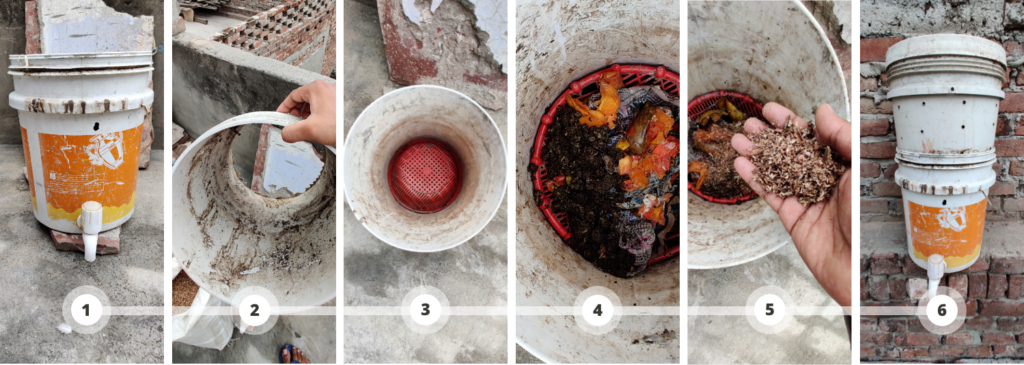
“Composting process is very easy and is as simple as making curd from milk!”
All the compost that Mr. Pradeep generated is utilized for his terrace garden. He has never sold the compost that he makes. He comes from a rural background and has been familiar with the composting process since childhood. He has been doing it for years with a stack of waste outside the house and covering it with cow dung back at the village. It’s called kudi or Khatta. When he first came to Delhi, he started growing plants on the terrace since he was fond of it and realised that if he started composting alongside, he will be able to grow healthier plants. Youtube videos and composting channels were his guide. He started his composting in a bucket and it took almost 6 months to get the compost.
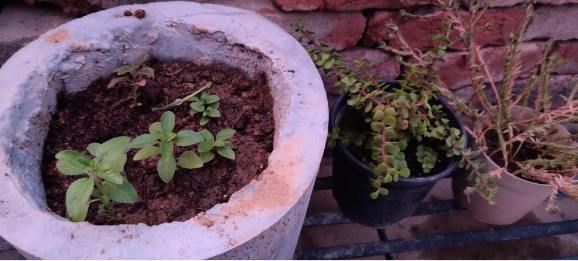
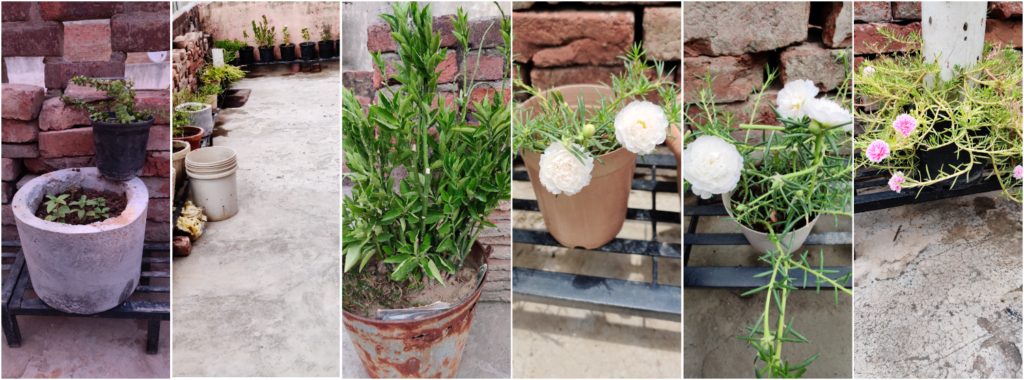
“During COVID-19 pandemic, I personally haven’t taken any extra precautions apart from the usual ones like keeping the groceries clean after purchasing it from the market.”
According to our composting hero, Mr. Pradeep, there is no specific problem with composting during this coronavirus pandemic. He recommends that we diligently wash our hands every time after handling the waste in the composting process.
Happy Composting!
To view more stories about composting, watch the following videos of composting heroes spotted and interviewed by Su-Dhara team:
Compost Hero- Lakshmi Ji: https://youtu.be/MhoUvUK7sTc
Compost Hero- Mrs. Wanchoo: https://youtu.be/I-60raI3Z3o
Compost Hero- Prabha Ji: https://youtu.be/Z0maVpwhSB4

To know more about Su-Dhara, please visit-
http://www.vertiver.com/sudhara/